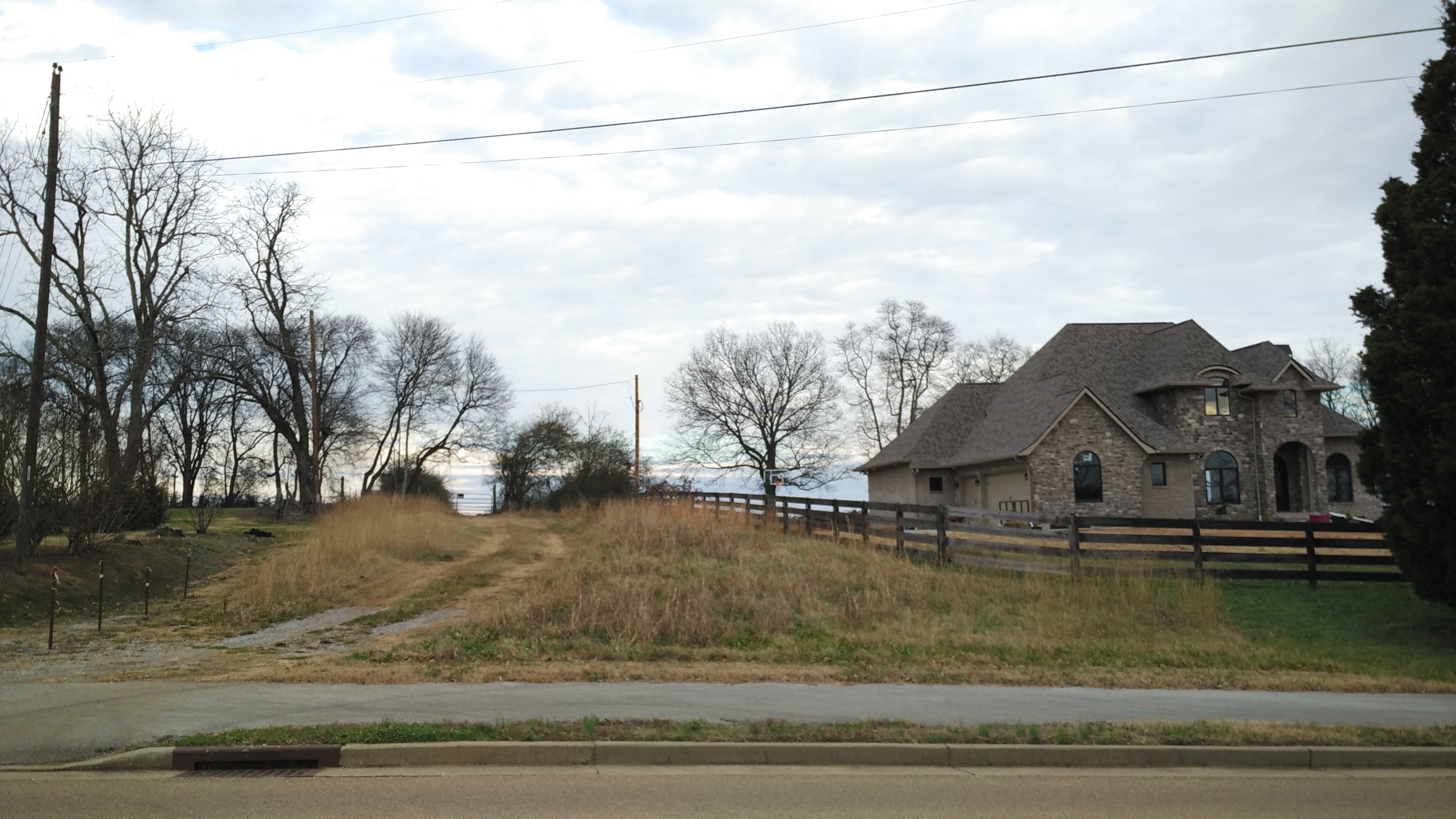I took this photograph in Farragut, Tennessee. There’s a large, newly-built single family house on the right. On the left is a gravel road, worn down to expose the dirt beneath. A well-maintained sidewalk underlines the scene.
The house on the right with its hodgepodge of historical styles and material finishes and three-car garage, is colloquially known as a ‘McMansion.’ Driving through any upper middle class suburb, one will see rows of similar-looking McMansions with slightly different colors or finishes. Like the catalog houses of the early 20th century, there are designed to not be site-specific. McMansions are derided by many architectural critics as examples of poor taste and excessive use of space, and suburbia is subject to the same criticism, to the point that McMansions are synonymous with suburbia. These criticisms leveraged are often about consumer choice—deciding to live in a house or neighborhood is just like deciding to buy coffee.
I find McMansions more interesting as indicators of a wider economic trend. Wealth moved from the inner city to the suburbs. After the Second World War, government housing policies incentivized veterans to move out of new cities and build homes in the suburbs. Minimum lot size rules in municipalities encouraged the construction of widely spaced single-family homes and car-dependent neighborhoods. McMansions are a continuation of this legacy.
Geographically speaking, suburbs are extensions of central cities. Because they are extensions, suburbs often rely on their cities for employment, transportation hubs, and cultural resources. The McMansion’s oddly ahistorical design is held up as proof of suburbia’s lack of actual history and culture. The suburbs are built on nothing, supposedly.
In contrast to hastily built suburbia, the countryside is defined by the consistency of its land use. It is sparsely populated, but clearly developed for human needs such as planting or grazing. The McMansion sits adjacent to a rural site in this photo. It illustrates the fallacy of writing history with cities at the center, and built environments as proof of history’s existence.
The story of suburbia is one of building outwards. Out onto what? The building took place not on empty land but land that served a different purpose. While the McMansion emulates a built history that originated elsewhere, the rural landscape of grass and gravel on the left is a product of the history that actually happened here. Rural America’s declining share of the population is just as integral to the story of suburbia, as urban flight.

Commentary on Rachel Tanur's Works: New Orleans Balcony